-
 Bitcoin
Bitcoin $108400
-4.30% -
 Ethereum
Ethereum $4287
-6.30% -
 XRP
XRP $2.823
-6.41% -
 Tether USDt
Tether USDt $1.000
0.00% -
 BNB
BNB $859.4
-1.70% -
 Solana
Solana $208.7
-2.95% -
 USDC
USDC $0.9999
-0.01% -
 Dogecoin
Dogecoin $0.2144
-4.47% -
 TRON
TRON $0.3349
-3.35% -
 Cardano
Cardano $0.8284
-4.90% -
 Chainlink
Chainlink $23.45
-8.63% -
 Hyperliquid
Hyperliquid $44.41
-8.39% -
 Ethena USDe
Ethena USDe $1.000
-0.02% -
 Sui
Sui $3.307
-5.87% -
 Stellar
Stellar $0.3589
-7.15% -
 Bitcoin Cash
Bitcoin Cash $531.4
-4.71% -
 Avalanche
Avalanche $23.71
-4.51% -
 Hedera
Hedera $0.2263
-6.16% -
 Cronos
Cronos $0.2765
-13.02% -
 UNUS SED LEO
UNUS SED LEO $9.427
-1.34% -
 Litecoin
Litecoin $110.1
-3.63% -
 Toncoin
Toncoin $3.060
-4.36% -
 Shiba Inu
Shiba Inu $0.00001217
-3.86% -
 Polkadot
Polkadot $3.770
-5.96% -
 Uniswap
Uniswap $9.548
-4.51% -
 Dai
Dai $0.9999
-0.01% -
 Bitget Token
Bitget Token $4.533
-1.55% -
 Monero
Monero $260.7
-3.53% -
 Aave
Aave $307.9
-2.55% -
 Ethena
Ethena $0.6460
-2.60%
How many confirmations are needed for a crypto transaction?
Each blockchain confirmation strengthens transaction security by adding a new block, making reversals increasingly difficult and ensuring network consensus.
Aug 29, 2025 at 10:18 pm
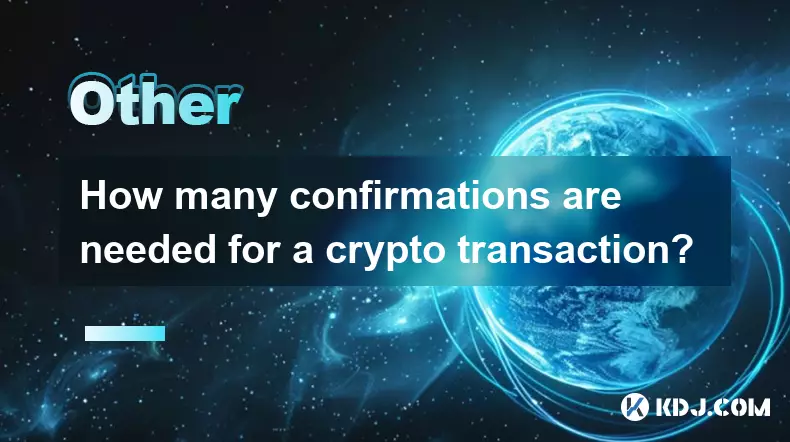
Understanding Blockchain Confirmations in Cryptocurrency Transactions
1. When a cryptocurrency transaction is broadcast to the network, it enters a pool of unconfirmed transactions. Miners or validators then select these transactions to include in the next block. Each time a new block is added to the blockchain, the transaction gains one confirmation. The number of confirmations reflects how many blocks have been built on top of the block containing the transaction.
2. Different cryptocurrencies have varying levels of network security and block generation times, which affects how many confirmations are considered safe. For example, Bitcoin generates a block approximately every 10 minutes, while Ethereum produces blocks every 12 to 14 seconds. Faster block times do not always mean faster security, as shorter intervals can increase the risk of orphaned blocks.
3. The decentralized nature of blockchain means there is no central authority guaranteeing transaction validity. Instead, consensus mechanisms like Proof of Work (PoW) or Proof of Stake (PoS) ensure agreement across nodes. As more blocks are added after the transaction block, the likelihood of a chain reorganization decreases, making the transaction more irreversible.
4. Exchanges and wallets often set their own confirmation thresholds before allowing users to access funds. These policies are designed to protect against double-spending attacks, especially during periods of high network congestion or when hash rate is low. A transaction with only one confirmation may still be reversed if a competing chain emerges.
5. Users should be aware that zero-confirmation transactions are inherently risky. While some services accept them for low-value payments, high-value transfers should wait for multiple confirmations. The deeper a transaction is buried in the blockchain, the more computationally expensive it becomes to alter it.
Recommended Confirmation Counts by Cryptocurrency
1. Bitcoin (BTC) typically requires 6 confirmations for high-value transactions. This standard was established by Satoshi Nakamoto and remains widely adopted. Six blocks represent about one hour of network consensus, making reversal nearly impossible under normal conditions.
2. Ethereum (ETH) transactions are often considered secure after 35 confirmations. Due to its shorter block time, the total waiting time is comparable to Bitcoin’s six confirmations. However, many platforms accept ETH deposits after 30 to 40 blocks for safety.
3. Litecoin (LTC), with a block time of 2.5 minutes, commonly uses 6 confirmations as well. Given its faster block generation, this equates to roughly 15 minutes, offering quicker finality than Bitcoin while maintaining strong security.
4. Bitcoin Cash (BCH) also follows the 6-confirmation rule, though some merchants accept payments instantly due to its emphasis on peer-to-peer electronic cash use. Network stability and hash rate distribution play a role in determining appropriate confirmation depth.
5. For smaller or less established coins, the required number may be higher due to lower hash power. A coin with minimal mining activity could be vulnerable to 51% attacks, necessitating 10, 20, or even more confirmations to ensure transaction permanence.
Factors Influencing Confirmation Requirements
1. Transaction value directly impacts how many confirmations are needed. A transfer worth $50 may clear with fewer confirmations than one worth $50,000. High-value transactions attract more scrutiny because the incentive for attackers to reverse them is greater.
2. Network congestion affects confirmation speed and reliability. During peak usage, mempools fill up, delaying inclusion in blocks. Users can pay higher fees to prioritize their transactions, but this does not reduce the number of confirmations required for security.
3. The consensus algorithm plays a critical role. PoW chains rely on computational effort, so confirmations represent accumulated work. In PoS systems, confirmations may relate to epochs or finality gadgets, such as Ethereum’s Clique or Casper FFG, which provide different security models.
4. Exchange policies vary based on risk tolerance. Some platforms credit deposits after just one confirmation for fast user experience, while others enforce strict rules to prevent fraud. Users should check individual platform requirements before initiating transfers.
5. Chain splits or forks can temporarily invalidate confirmations. If a blockchain undergoes a reorganization, transactions in orphaned blocks lose their confirmations. Networks with strong decentralization and high participation are less prone to such events.
Frequently Asked Questions
What happens if a transaction gets stuck with zero confirmations?A transaction may remain unconfirmed due to low fees or network congestion. Users can sometimes speed it up using replace-by-fee (RBF) or child-pays-for-parent (CPFP) techniques. If not confirmed after several days, it may be dropped from the mempool and returned to the sender’s wallet.
Can a confirmed transaction be reversed?Once a transaction has multiple confirmations, reversal is extremely unlikely. It would require a majority of the network’s hash power (in PoW) or stake (in PoS) to rewrite the blockchain, which is economically impractical on large, secure networks.
Do all wallets show the same number of confirmations?Yes, confirmations are based on the blockchain’s state, which is consistent across all full nodes. However, lightweight wallets may rely on third-party servers and could display slight delays or discrepancies compared to running a local node.
Is it safe to accept a transaction with one confirmation?For small transactions, yes. Many point-of-sale systems accept single-confirmation payments. However, for large amounts, waiting for the recommended number of confirmations is essential to mitigate the risk of double spending or chain reorganization.
Disclaimer:info@kdj.com
The information provided is not trading advice. kdj.com does not assume any responsibility for any investments made based on the information provided in this article. Cryptocurrencies are highly volatile and it is highly recommended that you invest with caution after thorough research!
If you believe that the content used on this website infringes your copyright, please contact us immediately (info@kdj.com) and we will delete it promptly.
- Pi Coin's Bullish Signs: Eyes on $0.365 Breakout and Beyond!
- 2025-08-29 21:50:12
- Bitcoin, Digital Health, Crypto Convergence: A New Era of Economic Resilience
- 2025-08-29 21:05:17
- BlockchainFX & Meme Coins: What's the Deal in 2025?
- 2025-08-29 19:05:12
- XRP Price Primed for Massive Rally? Raoul Pal Weighs In
- 2025-08-29 17:25:13
- Bitcoin's Future Value & Web Companies: A Perfect Storm?
- 2025-08-29 18:10:18
- Bitcoin Price Prediction: Institutional Wave Meets Reality Check, Says Research Firm
- 2025-08-29 15:30:16
Related knowledge
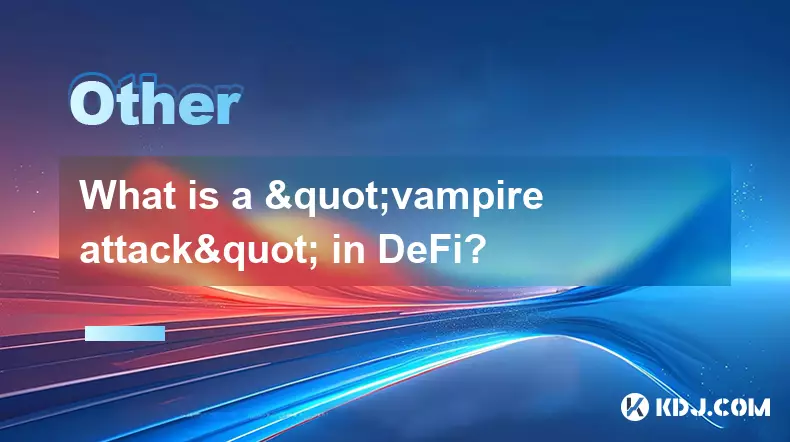
What is a "vampire attack" in DeFi?
Aug 29,2025 at 09:36pm
Understanding the Concept of Vampire Attacks in DeFi1. A vampire attack in the decentralized finance (DeFi) space refers to a strategic effort by one ...
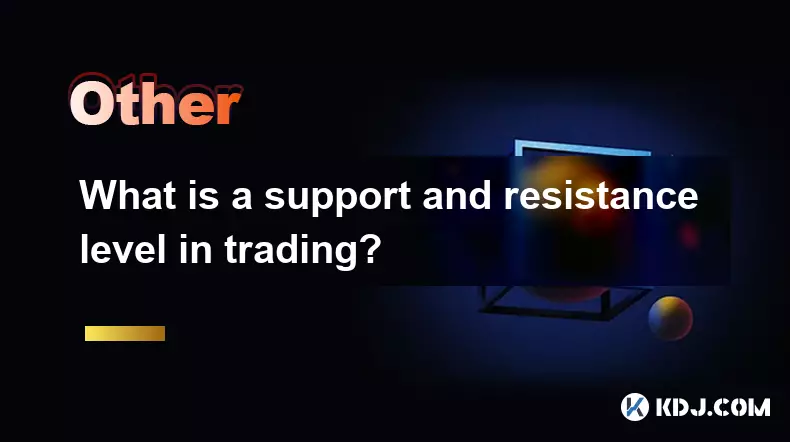
What is a support and resistance level in trading?
Aug 29,2025 at 07:00pm
Understanding Support and Resistance in Market Dynamics1. Support and resistance levels are foundational concepts in technical analysis, widely used b...

What are "diamond hands" and "paper hands"?
Aug 29,2025 at 09:54pm
Diamond Hands: The Mindset of Holding Through Volatility1. Diamond hands refer to the psychological resilience of holding onto cryptocurrency assets d...
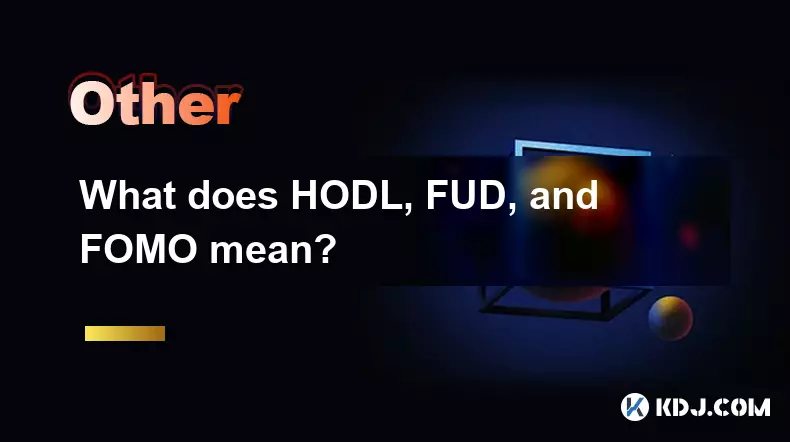
What does HODL, FUD, and FOMO mean?
Aug 29,2025 at 06:19pm
Fundamental Cryptocurrency Slang Every Trader Should KnowCryptocurrency communities thrive on unique terminology that reflects the culture, sentiment,...
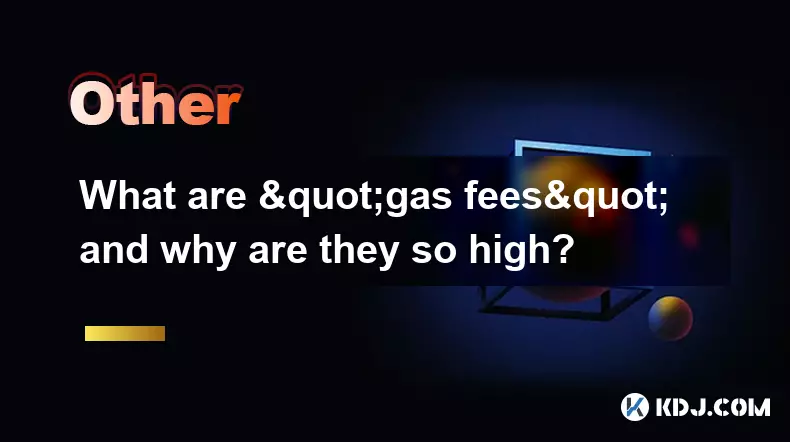
What are "gas fees" and why are they so high?
Aug 29,2025 at 08:54pm
Understanding Gas Fees in the Cryptocurrency Ecosystem1. Gas fees are payments made by users to compensate for the computational energy required to pr...

How many confirmations are needed for a crypto transaction?
Aug 29,2025 at 10:18pm
Understanding Blockchain Confirmations in Cryptocurrency Transactions1. When a cryptocurrency transaction is broadcast to the network, it enters a poo...

What is a "vampire attack" in DeFi?
Aug 29,2025 at 09:36pm
Understanding the Concept of Vampire Attacks in DeFi1. A vampire attack in the decentralized finance (DeFi) space refers to a strategic effort by one ...

What is a support and resistance level in trading?
Aug 29,2025 at 07:00pm
Understanding Support and Resistance in Market Dynamics1. Support and resistance levels are foundational concepts in technical analysis, widely used b...

What are "diamond hands" and "paper hands"?
Aug 29,2025 at 09:54pm
Diamond Hands: The Mindset of Holding Through Volatility1. Diamond hands refer to the psychological resilience of holding onto cryptocurrency assets d...

What does HODL, FUD, and FOMO mean?
Aug 29,2025 at 06:19pm
Fundamental Cryptocurrency Slang Every Trader Should KnowCryptocurrency communities thrive on unique terminology that reflects the culture, sentiment,...

What are "gas fees" and why are they so high?
Aug 29,2025 at 08:54pm
Understanding Gas Fees in the Cryptocurrency Ecosystem1. Gas fees are payments made by users to compensate for the computational energy required to pr...

How many confirmations are needed for a crypto transaction?
Aug 29,2025 at 10:18pm
Understanding Blockchain Confirmations in Cryptocurrency Transactions1. When a cryptocurrency transaction is broadcast to the network, it enters a poo...
See all articles

























































































